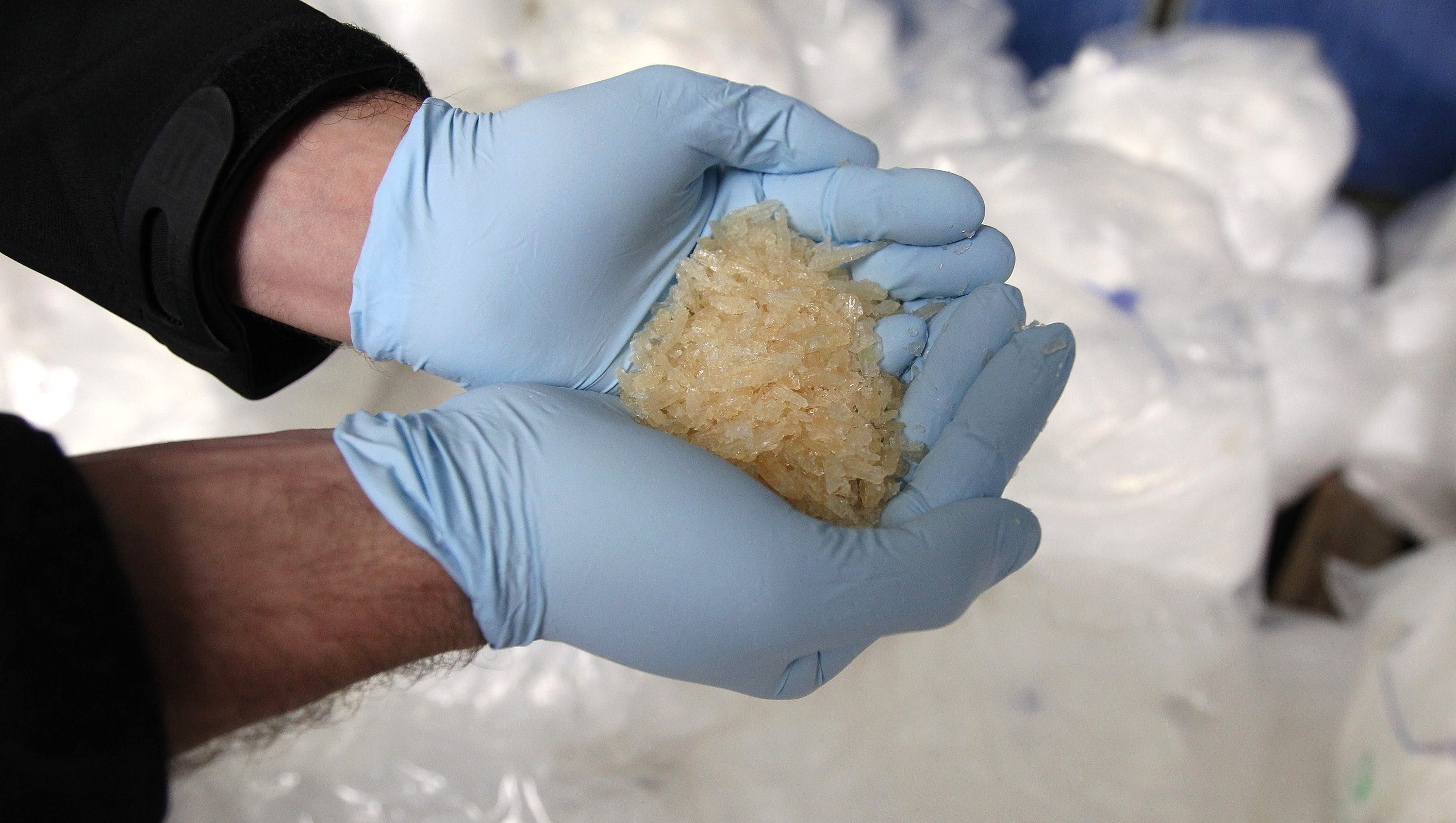Understanding The Risks: What Can You Cut Meth With And Why It Matters
Illicit drug use poses severe risks to individuals and communities, and understanding the dangers associated with cutting methamphetamine is crucial for public health awareness. Meth, a highly addictive and dangerous stimulant, is often adulterated with other substances to increase its volume and potency. This practice not only increases the health risks for users but also complicates treatment and recovery efforts. As we delve into the topic, it's essential to explore the substances commonly used to cut meth and the potential consequences of such actions.
The alarming prevalence of methamphetamine misuse has prompted experts and authorities to warn the public about the dangers of adulterated drugs. Cutting meth involves mixing the drug with various substances, some of which are toxic or hazardous. This practice is prevalent in the illegal drug trade, where dealers aim to maximize profits by stretching their supply. However, the implications for users are dire, as they may unknowingly consume dangerous additives, leading to severe health complications or even death.
As we navigate through this sensitive topic, it is vital to approach it with care and responsibility. By providing accurate and well-researched information, we aim to educate readers about the substances used to cut meth and the potential risks involved. This article will explore the most common additives, their effects, and the importance of seeking help for substance abuse. Let's begin by examining the key substances associated with cutting methamphetamine.
Read also:Hannah Wu A Rising Star In The World Of Entertainment
What Are the Most Common Substances Used to Cut Meth?
When discussing what can you cut meth with, it's important to recognize the wide range of substances that dealers may use. These additives can vary from relatively benign materials to highly toxic compounds. Some of the most commonly reported substances include:
- Caffeine
- Ephedrine
- Lidocaine
- Baking soda
- Ammonium nitrate
Each of these substances has its own set of risks and side effects, which can exacerbate the dangers of methamphetamine use. For instance, lidocaine, a local anesthetic, can mask the effects of meth, making it harder for users to gauge their intake and increasing the risk of overdose.
Why Do Dealers Choose These Specific Substances?
The choice of substances to cut meth often depends on availability, cost, and the desired effect. Dealers prioritize materials that mimic the effects of methamphetamine or enhance its perceived potency. For example, caffeine is frequently used because it is a stimulant that can amplify the drug's effects. Similarly, ephedrine, a compound found in some cold medications, is sometimes added to create a more intense high.
Another factor influencing the choice of cutting agents is the ease of procurement. Substances like baking soda and ammonium nitrate are readily available and inexpensive, making them attractive options for dealers. However, their inclusion in methamphetamine poses significant health risks to users, as these additives can cause respiratory issues, cardiovascular complications, and other adverse effects.
What Can You Cut Meth With That Poses the Greatest Danger?
Among the substances used to cut meth, certain additives stand out as particularly hazardous. Ammonium nitrate, for instance, is a chemical commonly found in fertilizers and explosives. Its inclusion in methamphetamine not only increases the risk of overdose but also poses dangers to the respiratory and nervous systems. Similarly, lidocaine, while relatively safe when used medicinally, can have detrimental effects when combined with meth, leading to heart problems and seizures.
Users must be aware of these dangers and understand the potential consequences of consuming adulterated drugs. Educating oneself about the substances involved and their effects is a critical step in reducing harm.
Read also:John Batiste And Autism An Indepth Exploration Of His Journey
What Are the Health Risks Associated With Cutting Meth?
The health risks of cutting meth extend beyond the immediate effects of the drug itself. Adulterants can interact with methamphetamine in unpredictable ways, leading to severe complications. For example, the combination of meth and ammonium nitrate can cause respiratory distress, while the use of lidocaine may result in cardiovascular issues.
In addition to these specific risks, the overall impact of adulterated methamphetamine on the body can be devastating. Users may experience increased heart rate, elevated blood pressure, and impaired cognitive function. Over time, these effects can lead to chronic health conditions, including heart disease, kidney damage, and neurological disorders.
What Can You Cut Meth With That Affects the Brain?
Some cutting agents have a direct impact on brain function, exacerbating the neurological effects of methamphetamine. Substances like ephedrine and caffeine can intensify the stimulant properties of meth, leading to heightened anxiety, paranoia, and aggression. These effects can make it even more challenging for users to seek help or engage in recovery programs.
Furthermore, the repeated use of adulterated methamphetamine can lead to long-term cognitive impairment, memory loss, and mood disorders. Understanding the neurological effects of cutting meth is crucial for both users and healthcare providers, as it highlights the importance of addressing the issue comprehensively.
What Are the Legal Implications of Cutting Meth?
In addition to the health risks, cutting methamphetamine also carries significant legal consequences. The production, distribution, and possession of adulterated drugs are illegal under most jurisdictions, and individuals involved in such activities may face severe penalties. Law enforcement agencies are increasingly focusing on disrupting the supply chains of illicit drugs, including those involved in cutting meth.
For users, the legal implications of consuming adulterated meth can be equally daunting. Possession of drugs containing harmful additives may result in criminal charges, further complicating the recovery process. It is essential for individuals to understand the legal landscape surrounding drug use and seek help before becoming entangled in the justice system.
How Can You Recognize Adulterated Methamphetamine?
Identifying adulterated methamphetamine can be challenging, as many cutting agents are designed to mimic the appearance and effects of the drug. However, there are certain signs that users can look for to detect the presence of additives. For example, changes in color, texture, or smell may indicate the presence of cutting agents. Additionally, users may notice differences in the drug's potency or effects, which could suggest adulteration.
One effective method for detecting adulterated methamphetamine is the use of drug testing kits. These kits can identify the presence of specific substances and provide users with valuable information about the composition of their drugs. While not foolproof, drug testing kits can serve as a useful tool for harm reduction and awareness.
What Can You Cut Meth With That Is Less Harmful?
While no cutting agent is entirely safe, some substances may pose fewer risks than others. For example, caffeine, when used in moderation, is generally considered less harmful than chemicals like ammonium nitrate or lidocaine. However, it is important to note that even seemingly benign additives can contribute to the overall health risks of methamphetamine use.
Users should prioritize their safety and well-being by avoiding adulterated drugs altogether. Seeking help for substance abuse and engaging in recovery programs can provide a path to a healthier, drug-free life. Support from healthcare providers, counselors, and peer groups can make a significant difference in overcoming addiction.
What Are the Alternatives to Cutting Meth?
Instead of focusing on cutting methamphetamine, individuals should consider alternative approaches to address the root causes of drug use. Access to affordable and effective treatment programs, mental health support, and community resources can help users break free from the cycle of addiction. By investing in prevention and recovery efforts, society can reduce the demand for illicit drugs and promote healthier lifestyles.
Conclusion: What Can You Cut Meth With and Why It Matters
In conclusion, understanding what can you cut meth with is crucial for raising awareness about the dangers of adulterated drugs. The substances used to cut methamphetamine can significantly increase the health risks for users, making it essential to educate oneself about the potential consequences. By promoting harm reduction strategies, supporting recovery programs, and addressing the underlying causes of drug use, we can work towards a safer and healthier future for all.
Table of Contents
- What Are the Most Common Substances Used to Cut Meth?
- Why Do Dealers Choose These Specific Substances?
- What Can You Cut Meth With That Poses the Greatest Danger?
- What Are the Health Risks Associated With Cutting Meth?
- What Can You Cut Meth With That Affects the Brain?
- What Are the Legal Implications of Cutting Meth?
- How Can You Recognize Adulterated Methamphetamine?
- What Can You Cut Meth With That Is Less Harmful?
- What Are the Alternatives to Cutting Meth?
- Conclusion: What Can You Cut Meth With and Why It Matters


